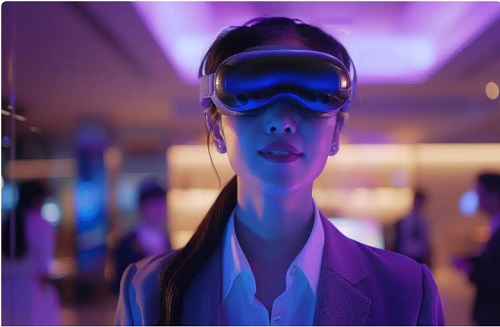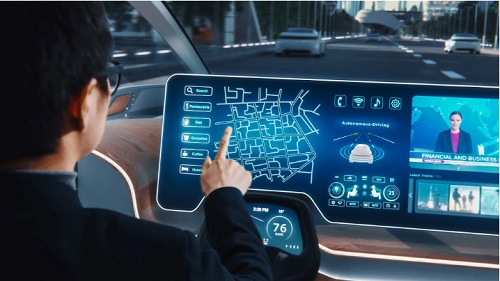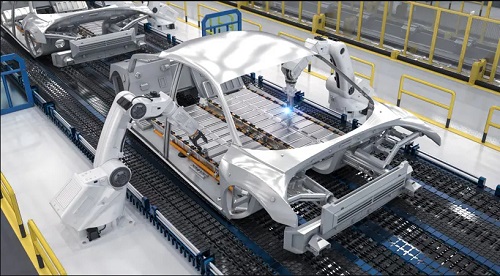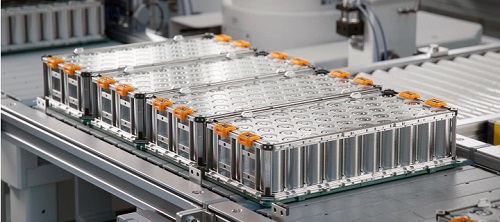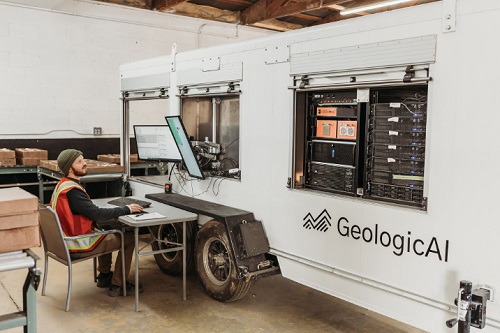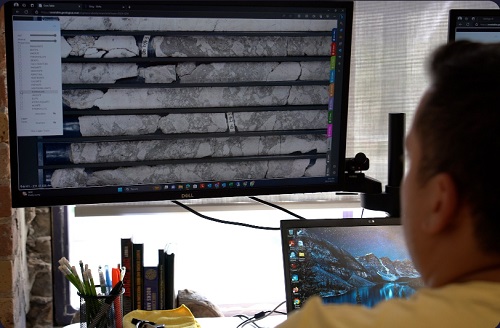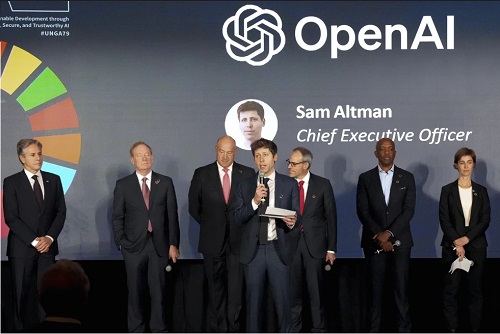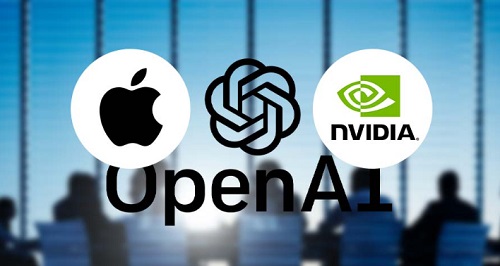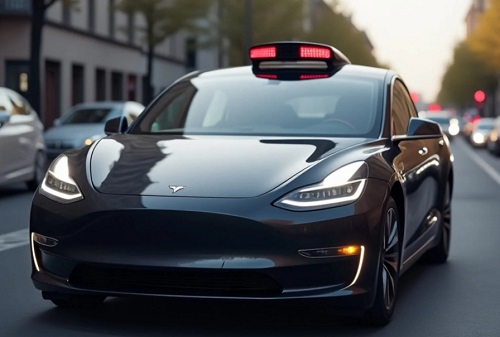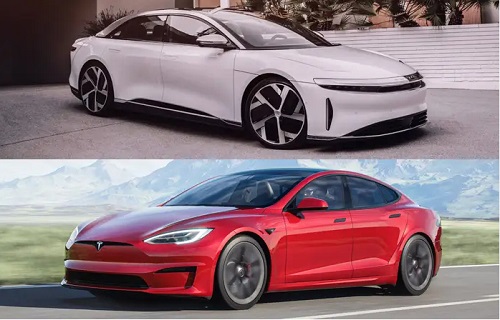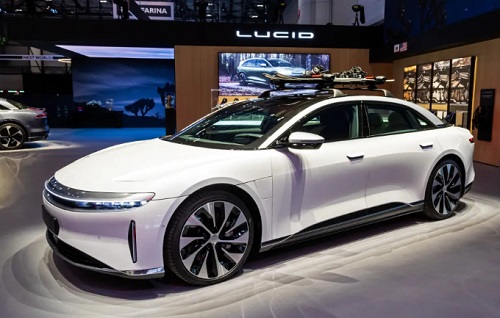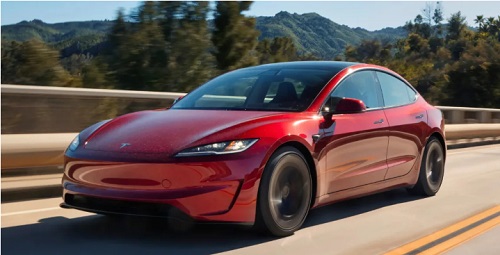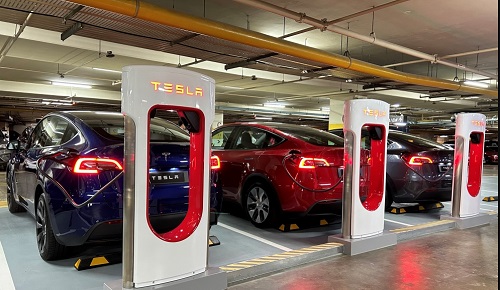Google launches a major update to Android annually, the operating system that powers the world’s most popular smartphones from the largest brands. In 2024, the search engine giant is expected to unveil Android 15 alongside new hardware at Google I/O on May 14.
Based on the current pattern, Android 15 will bring numerous new features, many of which will be powered by Generative Artificial Intelligence. Below are 10 new features being introduced with the release of Android 15 by Google.
Google has revealed and showcased Android 15 as the next major version of its mobile operating system. The development and release cycle of Android typically consists of three phases, which also applies to Android 15.
The initial phase is always the Developer Preview phase, which occurred earlier this year, followed by the more public Beta testing phase, and then the final stable version is released for everyone.
While Android 15 is in the final stages of testing, stable builds have not yet been released by Google. Until that happens, other manufacturers are unlikely to roll out stable updates based on Android 15 and will resort to releasing custom user interfaces based on Android 15 beta. These will not be stable versions, so there are a few things to note while testing them on your phone, regardless of the brand.
Initially, builds based on Android 15’s Developer Preview will lack the essence of the custom Android skins, as developer previews are intended for developers to test and optimize their apps for upcoming versions of Android. Subsequently, updates based on Android 15’s beta will begin to roll out, with Samsung usually being the first in this race.
While these builds will be more stable and have the visual aspects specific to the brand, the experience may not fully reflect the final update following the stable release of Android 15.
Therefore, if you plan to try any of these updates, avoid using them on your primary Android phone. Even if you choose to do so, be sure to back up any crucial data, as you may end up losing it if the update causes your phone to malfunction.
Keep checking this thread for further updates. We will update it with links and instructions on how to install beta updates for phones from each brand.
The official release of Android 15 has been delayed longer than expected, but we can now see the light at the end of the tunnel. According to a report from Android Headlines, the next version of Android will be available on October 15.
This is a departure from how Google has typically handled the launch in the past. Usually, the latest version of Android releases with the latest version of the Pixel, but that was not the case this year with the August release of the Google Pixel 9. In a way, Android 15 is releasing at its usual time; the Pixel was just early.
Google Android 15 to the Android Open Source Project, or AOSP, earlier this month. This usually indicates an imminent release. The reason it is releasing on the 15th, a Tuesday, instead of on Monday, is likely due to Columbus pushed Day, a national holiday in the US
Android 15 is arriving with numerous new and useful features that will enhance the overall user experience, including performance improvements, better PDF usability, notification cooldowns, and even partial screen sharing.
The new operating system will be compatible with the Pixel 6 and later devices, making this the first Android update that is limited to Tensor-based Pixels. If you are still using an older-model Pixel, you will not qualify for this update.
The idea is that since the update has taken longer to launch, it has been under more scrutiny and, as such, should theoretically have fewer bugs. Whether that actually plays out, though, remains to be seen.
October 15 is less than a month away, so stay tuned. A new version of Android will be here before you know it, even if it took longer to arrive than many would have preferred.
Google is finally pushing Android 15 to the Android Open Source Project (AOSP), marking a crucial milestone when companies begin preparing their respective software experiences for their smartphones and developers start fine-tuning their apps. As for the public release, the stable public build of Android 15 will be available for compatible Pixel phones in the coming weeks.
Android 15 will also be available on “devices from Samsung, Honor, iQOO, Lenovo, Motorola, Nothing, OnePlus, Oppo, Realme, Sharp, Sony, Tecno, Vivo, and Xiaomi in the coming months,” according to Google. If you have a Pixel phone, you can install the Android 15 QPR1 Beta update to get a taste of what’s to come.
If you have purchased the new Google Pixel 9 or Pixel 9 Pro, you can now join the test program and install the update. However, please note that you need to perform a full system wipe before installing the stable update once it’s released.
With Android 15 now available in the AOSP repository, custom ROM developers can freely modify or deploy it for their respective devices. The source code is also accessible for analysis by academics, researchers, and enthusiasts through the Git repository.
It was disappointing that Google didn’t release Android 15 with the new Pixel 9 series smartphones. It seems that we may have to wait until October. Google recently updated the details for the Android Beta Exit update, which specifies an October deadline for beta testers to leave the beta before the stable version is released.
Android 15 brings a wide range of changes aimed at developers, including deeper insights into app behavior, improved PDF viewing capabilities, and the ability to control HDR content performance on compatible panels while viewing SDR content.
Another interesting feature is automatic sound adjustment based on ambient noise levels within AAC audio apps. Users will also have more control over the LED flash intensity in image capture and torchlight mode. Finally, Google is changing the camera preview to enhance exposure, users to see items in the dark.
On the functional side, users can now pin the taskbar at the bottom of the screen, which is intended to improve the multitasking experience for foldable phone and tablet users. Private Space, a feature that allows users to create a secure password-protected environment for sensitive apps, has been added.
Regarding privacy, users can now fill in their account credentials or verify their identity with a single tap using the Passkeys system. Apps can also detect if the activity is being captured using any recording tool, allowing them to alert users.
We have been testing Android 15 for some time and will soon share our main observations on how it transforms the smartphone experience, especially on the Pixel 9 series devices.
Google is preparing to release Android 15 to the general public soon, so attention is slowly shifting to Android 16, which is expected to launch toward the end of next year. Android Authority recently uncovered interesting information about this update from the Android 15 QPR1 beta.
In the beta, the site uncovered that Google plans a “complete redesign” for Android’s Notifications and Quick Settings panels. The current design dates back to Android 12 when Google introduced its Material You design language. Xiaomi says most users prefer separate panels for settings and notifications, which is why its HyperOS software provides this. Subsequently, Samsung and Oppo are rumored to be considering a similar look in future versions of One UI and ColorOS, respectively.
Android Authority cites “online pushback” as the reason companies like Xiaomi and Samsung are either making or considering making these changes to Android’s Notifications and Quick Settings panels.
When testing the dual design, Android Authority explains that pulling down the status bar once still brings down the Notifications panel, which now only takes up about a quarter of the screen. While you cannot see any Quick Settings tiles in the new Notifications dropdown, you can still access the app underneath the panel.
Furthermore, you no longer see the Quick Settings panel when pulling down the status bar a second time. Instead, you access the Quick Settings panel by pulling down the status bar with two fingers.
It explains: “This is the change that I expect will be the most controversial, as it requires you to put more effort into accessing your Quick Settings tiles.” Finally, after pulling the Quick Settings panel down in Android 16, you can swipe left or right to see all your tiles.
Android Authority acknowledges that Google does not guarantee that it will implement such changes to Notifications and the Quick Settings panels in a future public version of Android 16. However, since partners appear to be making changes based on customer feedback, it would be wise for Google to consider doing so as well.
Google has announced that its impressive earthquake alert system is now accessible to users in all American states and territories. The company aims to reach the entire target audience within the coming weeks. Google has been testing this system, which also utilizes vibration readings from a phone’s accelerometer, since 2020.
When the onboard sensors detect movements similar to those of an earthquake, your phone will immediately cross-reference crowdsourced data collected from the Android Earthquake Alerts System to verify if an earthquake is occurring and send an alert.
The company states, “The Android Earthquake Alert System can provide early warnings seconds before shaking occurs.” Once it is confirmed that an earthquake is happening and its magnitude is measured at 4.5 or higher on the Richter scale, two types of alerts based on severity will be issued.
The first is the “Be Aware” alert, which advises users to prepare in case the ongoing light shaking escalates into something more severe. The “Take Action” warning appears when the shaking is strong enough for users to seek cover immediately.
In addition to alerts, the system will provide access to a dashboard where users can find further instructions to ensure their safety. Earthquake alerts are automatically enabled on Android phones.
Music discovery with enhanced AI capabilities
One of my preferred Assistant features has been the ability to hum a tune to search for it on the web. It works even better if you sing the tune or place your phone near a sound source, such as a speaker. The entire system is now receiving an AI enhancement.
Remember “Circle to Search,” a feature that allows you to search the web for any item appearing on your phone’s screen by simply highlighting it? Now, it includes an audio recognition component. By long-pressing on the home button at the bottom ( or the navigation bar), you can access the Circle to Search interface and tap the newly added music icon.
Once the AI identifies the track, it will automatically display the correct song with a YouTube link. The idea is to eliminate the need to hum or use another device or app for music identification. You can summon the AI, activate the simply audio identifier, and complete the task, all on the same screen.
Accessibility updates, Chrome’s reader mode, and more
Android’s TalkBack system is an excellent accessibility-focused feature that provides audio descriptions of everything on your phone’s display. Now, Google is leveraging its Gemini AI chatbot to offer more detailed and natural-language TalkBack descriptions, whether it’s a webpage, a picture from the local gallery, or social media.
In a similar vein, the Chrome browser on Android is introducing a reader system. Aside from reading the contents of a page, users will have the option to change the language, select a voice narrator model, and adjust the reading speed.
The final new feature is offline map access on Wear OS smartwatches. When users download a map on their smartphone for offline use, it is also synced to the connected smartwatch. This means that if you leave your phone behind and go for a hike or cycling trip, you can still access the map on your smartwatch.
A couple of new shortcuts are also being added to navigation software for Wear OS smartwatches. With a single tap on the watch face, users can check their surroundings. When needed, they can simply use a voice command to look up a location.
Android 15 has arrived. Here are the significant features and upgrades that Google is introducing.
How to Download and Install Android 15
If you own a Google Pixel phone (Pixel 6 or newer), you can download Android 15 by navigating to Settings > System > System update and tapping Check for update.
If you’re eager to try it out, you may be able to install the Android 15 Beta. These pre-release versions allow developers to test the upcoming version of Google’s mobile operating system, familiarize themselves with the new features, and ensure that their apps or games work properly. They also provide early adopters with a sneak peek.
While the beta releases are more stable than developer previews, you may still encounter some bugs, and you need to go through a few steps to install them, so it’s not recommended for everyone. If you’re interested in trying it, you will need a supported partner device (including select phones from Honor, Nothing, OnePlus, and Xiaomi).
To participate in the Android Beta Program, you must register. Most individuals who join the program will receive beta updates over the air without erasing their phones, but leaving the beta program will require a factory reset. It’s important to back up your Android phone before proceeding.
Updates typically appear automatically, but you can always verify if you have the latest version by navigating to Settings > System > System update and selecting “Check for update.” If you want to opt out of the beta and revert to Android 14, visit Google’s Android Beta page, locate your device, and click on “Opt out.”
This action will erase all locally saved data, so be sure to back up your device beforehand. You will receive a prompt to update to the previous version.
Individuals without a Pixel or a supported partner device should monitor their phone manufacturer’s website, forums, or social media for information on when to expect Android 15.
Notable New Features in Android 15
Here are our preferred features and enhancements in Android 15. Further details can be found on Google’s developer site. Additionally, make sure to read our article on all the new features coming to Android and the Android ecosystem, including Wear OS, Android Auto, and Android TV.
Private Space
Android 15 introduces a new Private Space where you can keep sensitive apps separate from the rest of your phone. Whether you want to protect health data or your banking apps, Private Space allows you to keep them securely behind a second layer of authentication, using the same password you use to unlock your device or an alternate PIN.
When your Private Space is locked, apps are hidden from the Recents view, notifications, settings, and other apps. You also have the option to completely wipe your private space.
What’s That Tune?
While we have a guide on how to identify songs with your phone, Google is simplifying the process with Circle to Search in Android 15. If a tune playing on your phone or a nearby speaker captures your attention, long-press the Home button or navigation bar to activate Circle to Search, then tap the music button to identify the track name and artist. You will also receive a link to the YouTube video.
Improved Audio Image Descriptions
Android features a screen reader called TalkBack for individuals with visual impairments, and in Android 15, Google’s Gemini AI enhances its ability to describe images. Traditionally, image descriptions on websites were limited to the content entered in the alt text field, but Google’s AI can now analyze images and provide more detailed descriptions. This new feature also works with photos in your camera roll, social media images, or pictures in text messages.
Earthquake Alert System
Individuals in the US will receive potentially life-saving warnings about imminent earthquakes, as Android 15 incorporates crowd-sourced earthquake detection technology. This new feature also includes guidance on what to do following an earthquake.
Enhanced Satellite Connectivity
Android 15 offers a significant expansion in satellite connectivity. Certain RCS and SMS apps should now be capable of sending text messages via satellite, a capability previously restricted to emergency use. Google has also standardized the pop-ups and other user interface elements to make it clearer when connected via satellite. Currently, only the Pixel 9 range supports satellite messaging.
Offline Maps on Wear OS
If you own a Wear OS smartwatch to pair with your Android phone, you can now access offline maps. Any map downloaded to your phone can be used for directions on your wrist, allowing you to leave your phone behind when going for a run.
Improved Bluetooth
Android 15 will bring various Bluetooth enhancements. Firstly, the quick settings tile now opens a popup that allows you to select individual devices, access their settings, and pair new devices, streamlining the settings menu navigation.
It also appears that Google is modifying how the Bluetooth toggle functions, so when you turn off Bluetooth, it will automatically turn back on the following day by default. This feature will likely benefit Android’s Find My Device network, which uses Bluetooth to locate devices. You can deactivate the automatic turn-on in the settings if you prefer.
Partial Screen Recording
Instead of recording or sharing your entire screen, in Android 15, you can share an individual app without revealing the rest of your screen or incoming notifications. Logins and one-time passwords (OTPs) are automatically hidden from remote viewers. This feature is already available on Pixels, but it is now integrated into Android.
Blocking of malicious apps
Several updates in Android 15 make it more challenging for malicious apps to operate. They can no longer hide behind other apps by bringing them to the foreground or overlay themselves invisibly on top.
Additionally, there are changes designed to prevent the exploitation of intents, which allow you to initiate an activity in another app by specifying an action you would like to perform, as these are often misused by malware. These are behind-the-scenes modifications aimed at enhancing user safety.
Application Archiving
If you haven’t used an app or game for a while, you might receive a prompt to uninstall it. But what if you anticipate using it again in the future? With Android 15, you can archive most of the app to free up space while retaining your user settings or game progress.
The feature for automatically archiving apps was announced last year, but in Android 15, it becomes a systemwide option, allowing users to choose to automatically archive apps when storage is running low.
Customizable Vibrations
Android 15 introduces the ability to enable or disable keyboard vibrations systemwide without needing to delve into the keyboard settings. A new toggle is available in Settings > Sound and Vibration > Vibration and Haptics, where users can also use sliders to adjust haptic feedback intensity (previously available on select Android phones but now available systemwide).
The second beta also introduces rich vibrations, allowing users to distinguish between different types of notifications without having to look at the screen.
Audio Sharing
Sharing audio from your phone using Bluetooth LE and Auracast should be easier with a new settings page dedicated to audio sharing. This feature was not functional in the last beta, and the supported devices for this feature are not yet clear. However, Android Authority managed to get it working on a Pixel 8 Pro. This feature enables you to broadcast audio from your phone to other devices within Bluetooth range, including the phones and earbuds of friends and family who can join by scanning a QR code.
Improved PDF Handling
Dealing with PDF files on an Android phone can be challenging, so the integration of several PDF enhancements into Android 15 by Google is a welcome update. PDFs should load more smoothly, and the update includes support for password-protected files, annotations, form editing , and text selection. Additionally, users can now search within PDF files.
Volume Control
Android 15 support for the CTA-2075 loudness standard, allowing for volume comparison between apps and intelligent audio adjustments to prevent sudden volume changes when switching between apps, taking into account the characteristics of the speakers, headphones, or earbuds.
Enhanced Low-Light Camera
The camera app in Android 15 includes significant improvements. Firstly, the Low Light Boost feature provides better previews in low-light conditions, allowing for improved framing of nighttime shots and scanning of QR codes in limited light. Additionally, new camera app options offer finer control over the flash, enabling users to adjust the intensity for both single flashes and continuous flashlight mode.
Improved Fraud and Scam Protection
Android 15 includes several updates aimed at combating fraudulent activities. Google will utilize AI through Play Protect and on devices to detect and flag suspicious behavior. Messages containing one-time passwords (OTPs), commonly used in two-factor authentication, will now be hidden from the notifications system, making interception more difficult. Restricted settings for side-loaded apps (those not downloaded through the Google Play Store) are also being expanded.
Task Bar Options
For Android tablets and folding phones, Google has made changes to the task bar dock functionality. Initially permanent, then transient, and now customizable, providing users the option to choose when to display the task bar. This is useful for docked tablets where a persistent task bar may be preferred, but it also offers the flexibility to hide it. Users can also pin their favorite split-screen app combinations. Android 15 allows apps to display edge-to-edge, making the most of the available screen real estate, even with a task bar or system bar at the bottom.
Improved Battery Life
While Android updates typically include tweaks and enhancements for efficiency that positively impact battery life, Android 15 focuses on imposing more checks on foreground services and restricting apps that continue running in an active state. Devices with ample RAM should also experience faster app and camera launch times with lower power consumption, thanks to support for larger page sizes.
Enhanced Theft Protection
Many of the new security measures introduced by Google in Android 15 to deter theft, such as automatic locking when the phone is snatched and remote locking options, will be available on devices running Android 10 and later. However, the update to factory reset protection, prevent whichs thieves from setting up a stolen device again without the owner’s device or Google account credentials, is exclusive to Android 15.
Additional Options for Foldable Cover Screens
Some of the top folding phones automatically switch the activity you’re doing to the cover screen when you fold them, but Google is now incorporating that feature into Android 15.
If you prefer the cover screen to lock when you fold it, that will also be possible. There is also increased support for apps displaying on smaller cover screens within the more compact flip phone category.
Expanded Health Connect Data
Health Connect initially served as an app to aggregate all your health and fitness data from various devices and apps. It was preinstalled with Android 14, but Android 15 is introducing two new types of data: skin temperature (gathered by wearables like the Oura ring and the Pixel Watch 2) as well as training plans—which can encompass completion goals for calories burned, distance, duration, repetition, and steps, but also performance goals around as many repetitions as possible (AMRAP), cadence, heart rate, power, perceived rate of exertion, and speed.
Anticipation for a new Android update is akin to following a treasure map to uncover all the exciting new features. This is especially true early in the release cycle when the only people with knowledge about it are the engineers working on it. So, let’s delve into Android 15, codenamed Vanilla Ice Cream.
We have a solid grasp of the new features and changes coming with this mobile OS, and today we’ll discuss it, providing a comprehensive overview of everything you need to know about Android 15.
UPDATE: On September 4th, Google officially rolled out the stable version of Android 15, first on Pixel devices, and also made the source code accessible through its Open Source Project program. Here’s an excerpt from the official statement:
“Today we’re releasing Android 15 and making the source code available at the Android Open Source Project (AOSP). Android 15 will be available on supported Pixel devices in the coming weeks, as well as on select devices from Samsung, Honor, iQOO, Lenovo, Motorola, Nothing, OnePlus, Oppo, realme, Sharp, Sony, Tecno, vivo, and Xiaomi in the coming months.”
The release date for Android 15 is set for August 13, 2024. The latest mobile OS will debut on the new Pixel 9 series devices, so we have less than a month before the stable release hits Pixel owners.
Even though the commercial launch of Google’s new OS is still some time away, Android 15 has already progressed beyond the stage we previously described. The first Android 15 developer preview, known as DP1, was released on February 16, 2024, followed shortly by the second Android 15 developer preview, or DP2, released on March 21, 2024. The first official Android 15 Beta is now available as well, having launched on April 11.
Google has recently released the final Android 15 Beta 4 (build AP31.240617.009) on July 18, and this will be the last one before the stable release we anticipate to debut on August 13, in conjunction with the new Pixel phones.
Eligible Devices for Android 15
This section will eventually comprise a long list, but for now, all we can do is speculate. Naturally, the first devices to receive Android 15 will be the Pixels. Google will introduce the stable Android 15 version with the Pixel 9 lineup and then gradually extend it to other eligible devices.
We expect older Pixel models eligible for an update to also receive Android 15, including the Pixel 6, Pixel 6 Pro, Pixel 6a, Pixel 7, Pixel 7 Pro, Pixel 7a, Pixel Fold, Pixel 8, and Pixel 8 Pro.
So, if you want to be among the first to get it, your best option is to acquire the latest Pixel phone. Typically, it’s logical to assume that the latest flagship phones will be the next in line to receive the update, but there may be delays or variations depending on the manufacturer and the specific user interface layered on top of vanilla Android 15.
For instance, Samsung will also distribute Android 15 to most of its current models, beginning with the Samsung Galaxy S24, Samsung Galaxy S24 Plus, Samsung Galaxy S24 Ultra, Galaxy S23 line, Galaxy S22 lineup, and Galaxy S21 series, along with the latest foldable devices, the Galaxy Z Fold 3 and Z Flip 3, Galaxy Z Fold 4 and Z Flip 4, Galaxy Z Fold 5 and Z Flip 5, and also the upcoming Samsung Galaxy Z Fold 6 and Samsung Galaxy Z Flip 6.
Naturally, all flagship phones from other brands, such as the Sony Xperia 1 V, or the OnePlus 12, for example, will also receive Android 15, but your best opportunity to receive it first is with a current Pixel device.
Android 15 comes with a host of new features, as revealed in the first two developer previews and the official Beta release. These include:
– NFC Wireless Charging
– Satellite support
– Improved Battery Life
– Forced Dark Mode
– In-app camera controls
– HDR headroom control
– Enhanced notification page in landscape
– Loudness control
– Audio output control from Pixel Watch
– Notification Cooldown
– Low Light Boost
– Smoother NFC experiences
– Wallet Role
– PDF improvements
– Volume Control for Speaker Groups
– Partial screen sharing
– Health Connect
– Privacy Sandbox
– Screen recording detection
– Cover screen support
– Universal Toggle for Keyboard Vibration Control
– Sensitive notifications
– Persistent taskbar
– Bluetooth Popup Dialog Enhancements
– App Archiving
– New “Add” button for Widgets
– Minor Bug Fixes
– New looks for the Settings app
– Circle to Search for tablets and foldables
– Predictive Back
NFC Wireless Charging
Android 15 will introduce NFC Wireless Charging (WLC), which utilizes NFC antennas to wirelessly power small gadgets, eliminating the need for wireless charging coils.
Satellite support
The new OS will enhance platform compatibility with satellite connectivity, identifying instances when a device is linked to a satellite network and extending support for SMS and MMS applications to use satellite connectivity for message transmission.
Better Battery Life
Google announced a tweak in Doze mode during Google I/O, which could potentially increase the battery life of some devices by up to three hours by making devices go into Doze mode 50% quicker.
Forced Dark Mode
Android 15 might offer a new way to force Dark Mode on apps through a new feature called “make-all-dark,” which will work better and more consistently than the existing “override-force-dark” toggle in Developer Options.
In-app camera controls
The update will introduce the ability to control the strength of a phone’s flash intensity in both single and torch modes, providing more control over low-light photography.
HDR headroom control
Android 15 will automatically select the optimal HDR headroom based on the device’s capabilities and the panel’s bit-depth, with the added ability to adjust the HDR headroom to balance SDR and HDR content.
Better notification page in landscape
The UI will be updated to arrange notifications and controls neatly next to each other in landscape mode, providing more information with just one swipe down.
Volume Adjustment
Android 15 is set to support a new standard for controlling volume (CTA-2075), designed to address inconsistencies in audio loudness and reduce the need for users to constantly adjust volume levels when switching between different types of content.
This feature uses information about the connected output devices, such as headphones and speakers, as well as the loudness metadata embedded in AAC audio content, to intelligently adjust the audio loudness and dynamic range compression levels. The aim is to achieve a consistent volume level across all types of audio content and sources used on your phone.
Control Audio Output from Pixel Watch
A small adjustment will allow users to change the audio output directly from their Pixel Watch, without needing to use their phone. While you can already control the audio itself from the watch, pausing songs and adjusting the volume, changing the output device, for example from the phone to an external speaker or vice versa, currently requires using your phone. This will change in Android 15.
Notification Cooldown
Notification cooldown is an interesting new feature in Android 15 that aims to reduce the overload of notifications and interruptions. It works by preventing apps from sending a large number of notifications in a short period of time. Here’s how it works: when an app sends multiple notifications quickly, Android 15 detects this and imposes a cooldown period. During this cooldown period, the app is temporarily restricted from sending additional notifications.
Low Light Boost
Android 15 will introduce a feature called Low Light Boost, which functions as an auto-exposure mode for your smartphone. Unlike Night Mode, which captures a series of images to create a single enhanced still image, Low Light Boost can sustain a continuous stream of frames. This new feature will assist with tasks such as QR code scanning in low-light conditions and real-time image preview, brightening dark videos, and showing a preview of the end result.
Improved NFC Experiences
Android 15 is enhancing tap-to-pay to make it smoother and more reliable, while still supporting all NFC apps. On certain devices, apps will be able to listen to NFC readers without immediately taking action. This will speed up transactions and make the moment when you actually pay using NFC almost immediate.
Wallet Role
Android 15 will introduce a feature called Wallet role, which replaces the old NFC contactless payment setup. This will enable users to select a Wallet Role app and make payments with that app quicker and more reliably.
PDF Enhancements
In Android 15 Developer Preview 2, we received a glimpse of significant upgrades to how the software handles PDF documents. This means that apps can perform tasks such as handling password-protected files, adding annotations, editing forms, searching through PDFs, and selecting text to copy. Additionally, there are optimizations for linearized PDFs, enabling them to load faster locally and use fewer resources.
Volume Control for Speaker Groups
A recent update in the second Android 15 Beta saw the return of the Speaker Group control feature. When your Pixel phone is connected to a group of speaker devices (Bluetooth speakers, Nest Hubs, etc.), the volume control on the phone acts as a master volume for all of them.
This feature was previously removed due to alleged patent infringement, but it appears that Google has resolved any legal issues, as the option has been reinstated.
Partial Screen Sharing
Android 15 will allow users to share or record a single app window instead of the entire screen. This useful feature, first introduced in Android 14 QPR2, is accompanied by something called MediaProjection callbacks. This prompts users for consent when it detects that partial screen sharing is taking place.
Health Connect
Android 15 builds upon the Android 14 extensions 10, with a focus on Health Connect by Android. This platform serves as a secure hub for managing and sharing health and fitness data collected by various apps.
With this update, there’s expanded support for additional data types related to fitness, nutrition, and other health-related information.
Overall, it’s about enhancing the capabilities of Health Connect to handle a broader range of health and wellness data, ensuring users have a comprehensive and centralized platform for managing their health information securely.
Privacy Sandbox
The Privacy Sandbox on Android introduces some innovative new technology aimed at balancing privacy and effective ad targeting. With Android 15, Google plans to bring Android Ad Services to extension level 10, which includes the latest Privacy Sandbox on Android.
This means that you’ll be able to receive personalized ads without compromising privacy. It’s a balancing act, so don’t expect to be completely anonymous and still receive relevant ads.
Screen recording detection
Android 15 will enable apps to identify if they are being recorded. When an app switches between being visible or invisible within a screen recording, a callback is activated. This feature ensures that if an app is handling sensitive information, such as personal data, the user will receive a notification if the screen is being recorded, providing users with more transparency and control over their data privacy.
Cover screen support
Android 15 will enhance the way apps are displayed on small cover screens of foldable devices, like the Galaxy Flip. While these screens are too small to run full Android apps, Android 15 will empower developers to customize their apps and add extra functionality to those small cover screens.
Universal Toggle for Keyboard Vibration Control
The Universal Toggle for Keyboard Vibration Control in Android 15 will offer users a centralized setting to manage keyboard vibration across the entire system. This toggle will enable users to easily enable or disable keyboard haptic feedback for all apps and input methods on their device, eliminating the need to navigate through various settings menus within individual apps or input method settings.
Sensitive notifications
Android 15 will introduce enhanced controls for managing sensitive notifications, providing users with more options to safeguard their privacy. With sensitive notifications, users can choose whether sensitive content is displayed on the lock screen, in notifications, or when the device is unlocked, specify whether sensitive notifications can be expanded or interacted with directly from the lock screen or notification shade, and mark notifications as sensitive, prompting the system to treat them with additional privacy considerations.
Persistent taskbar
The Persistent Taskbar for large-screen devices in Android 15 is designed to improve multitasking and navigation on devices with large displays such as tablets or foldable phones. This feature will create a dedicated area at the bottom of the screen where users can access frequently used apps, system controls, and navigation options, allowing for quick switching between tasks or launching apps.
Bluetooth Popup Dialog Enhancements
The Bluetooth popup dialog in Android 15 has been enhanced to provide users with additional Bluetooth controls, such as shortcuts or links to additional Bluetooth settings or options, the ability to quickly cancel or approve certain actions over Bluetooth, and more.
App Archiving
Android 15 will introduce app archiving, allowing users to archive unused or infrequently used apps to free up storage space while retaining the ability to easily restore them when needed. Archived apps can still receive updates from the Google Play Store, and their data remains intact.
New “Add” button for Widgets
Android 15 Beta has introduced a minor tweak for adding widgets to the home screen. Instead of dragging the desired widget to the place you want it, selecting a widget now shows an “Add” button. Tapping on it will automatically place the widget on the next empty space on the home screen, simplifying the process for users.
Minor Bug Fixes
Android 15 includes the usual bug fixes and patches, including one that addresses an issue where creating a Private Space for the first time removed some icons from the home screen.
New looks for the Settings app
According to Android Authority, the Settings app will undergo a redesign in Android 15 to provide a more organized and contextual look and feel. The different settings will be arranged in groups, aiming to make navigation more intuitive for the user.
Circle to Search for tablets and foldables
Circle to Search works more effectively on tablets and foldables in Android 15 Beta 3. Users can activate this feature by holding down the action key, regardless of the taskbar style being used. When enabling Persistent Taskbar for the first time, there’s even a pop-up that describes the new feature.
Predictive Back
Android was lacking a feature compared to iOS, for instance, which was predictive back or the capability to preview where the “back” gesture would lead. Google introduced this functionality in Android 14, but it was only accessible through the Developer Options menu. Now, the company plans to make this feature available to eligible apps, allowing them to utilize predictive back to provide users with more information about the destination of the back gesture.
Observe the development and enhancements of Android over time.
At times, it seems like we’ve been using Google’s mobile operating system on our Android devices forever. However, it has been 15 years since the first official Android phone was released. An essential decision in Android’s history was Google’s commitment to transforming Android into an open-source OS. This decision contributed to its widespread adoption by third-party phone manufacturers. Just a few years after the introduction of Android 1.0, smartphones powered by the new OS became ubiquitous.
Fast forward to the present, and we are now on Android 14. The OS has emerged as the most popular mobile operating system globally. It has surpassed numerous competitors such as Symbian, BlackBerry, Palm OS, webOS, and Windows Phone (most of which have ceased to exist). Apple’s iOS remains the only platform that continues to pose a significant challenge to Android. This dynamic is unlikely to change in the near future.
Let’s delve into the history of Android thus far.
The history of Android began in October 2003, well before the term “smartphone” became commonplace and several years prior to Apple’s unveiling of the first iPhone and iOS. Android Inc. was established in Palo Alto, California, by four founders: Rich Miner, Nick Sears, Chris White, and Andy Rubin. At the time, Rubin articulated that Android Inc. would develop “smarter mobile devices that are more aware of their owner’s location and preferences.”
In a 2013 speech in Tokyo, Rubin disclosed that the original purpose of the Android OS was to enhance the operating systems of digital cameras. Even at that time, the market for standalone digital cameras was in decline. A few months later, Android Inc. redirected its efforts towards integrating the OS into mobile phones.
Google’s acquisition of Android in 2005 marked a significant turning point.
In 2005, a pivotal chapter in Android’s history unfolded when Google acquired the original company. Rubin and the other founding members continued to develop the OS under their new ownership. They opted to base the Android OS on Linux, enabling them to offer the operating system to third-party mobile manufacturers at no cost. Google and the Android team believed that the company could generate revenue by providing other services, including apps.
Rubin served as the head of the Android team at Google until 2013 when the company announced his departure from the division. Rubin ultimately left Google in late 2014 and launched a startup business incubator before reentering the smartphone industry with the ill-fated Essential in 2017.
While working for Google, Irina Blok created the now-familiar logo for the Android OS. It resembles a combination of a robot and a green bug. Blok mentioned that the only directive given by the Google design team was to create a logo that resembled a robot. She also revealed that one of her inspirations for the final design of the Android mascot was the familiar restroom symbols representing “Men” and “Women.”
Blok and Google made the decision to open-source the Android robot itself. Most other major companies would protect such a logo or mascot from modifications. However, numerous individuals have altered Android’s logo, as Google permits such changes under the Creative Commons 3.0 Attribution License .
The Android mascot, also known as “Andy,” underwent a redesign along with much of Android’s branding in 2019. Although Andy may have lost its body, the new look has become more prevalent across Android’s branding.
Android 1.0: The inception of Android’s history
In 2007, Apple introduced the first iPhone, ushering in a new era in mobile computing. At the time, Google was secretly working on Android, but in November of that year, the company gradually began to unveil its plans to compete with Apple and other mobile platforms.
In a significant development, Google spearheaded the formation of the Open Handset Alliance, which included phone manufacturers like HTC and Motorola, chip manufacturers such as Qualcomm and Texas Instruments, and carriers including T-Mobile.
Then Google Chairman and CEO Eric Schmidt stated, “Today’s announcement is more ambitious than any single ‘Google Phone’ that the press has been speculating about over the past few weeks. Our vision is that the powerful platform we’re unveiling will power thousands of different phone models.” The public beta of Android version 1.0 was launched for developers on November 5, 2007.
In September 2008, the very first Android smartphone was unveiled: the T-Mobile G1, also known as the HTC Dream in other regions of the world. It was released in the US in October of that year. With its slide-out 3.2- inch touchscreen combined with a QWERTY physical keyboard, the phone was not exactly a design marvel. In fact, the T-Mobile G1 received rather negative reviews from technology media outlets.
The device did not even feature a standard 3.5mm headphone jack, which, unlike today, was essentially a standard phone feature among Android’s competitors.




